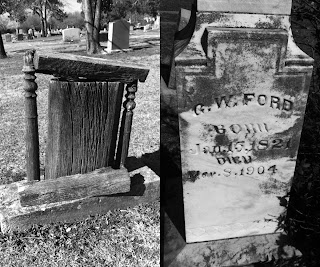The quiet two block stretch along Main Street will never be confused with Dallas but downtown Allen helped identify the small community for over 100 years. Buildings with names like Cundiff and Bolin housed grocers and soda fountains, dress shops, pharmacies and banks long before the highway and big boxes came to town.
No matter how big or small, every community needs a focal point. Planners for the Houston and Texas Central Railroad were aware of that need as they built depots and storefronts along their new railway in the late 1800’s. Fortunately, Allen was one of those towns. The railroad platted Allen in 1876 and also built a row of wooden buildings facing the newly laid tracks to serve as a business district for the small town it served.
Downtown Allen as we know it began in 1906 when J.W. Thomas, a local blacksmith, sold his downtown property to the Allen State Bank. The bank was the town’s first brick structure and faced Main Street instead of the railroad tracks. Over the next nine years, downtown grew from east to west along both sides of Main Street and many of those same structures stand today – at least on the south side. A devastating fire in 1915 destroyed all but two structures on the north side of Main Street. Volunteers bravely fought to keep embers from the south side of downtown and the year’s cotton harvest, which was stacked at the local cotton exchange.
More than 30 downtown businesses served the community with groceries, clothing, banking, farm supplies and of course, the general store. Through the 1950’s, downtown was a convenient business destination for farm families and merchants to conduct business, play some checkers and complain about the weather.
It was the arrival of Central Expressway in 1962 that led to new housing developments and retail outside of downtown. Traffic also increased, especially on FM 2170, Allen’s major east-west road. In 1983, the Main Street Study Committee recommended the city (and state) route traffic along McDermott rather than through downtown. Traffic loosened up but retail downtown businesses gradually moved out. They were replaced with offices and service businesses with one big exception; Rodenbaugh’s Appliance and Flooring. The store remains as Allen’s oldest operating business. Part of the store also rests on the foundation of the 1906 Allen State Bank.
Most people who are familiar with the area agree that downtown Allen and many of the surrounding streets could use some revitalization. In fact, a Downtown Steering Committee appointed by the mayor is currently seeking citizen input with that goal in mind. Let’s just hope that the committee and decision-makers can make the downtown area the friendly and convenient destination it was for many, many years. Anyone for a game of checkers?








